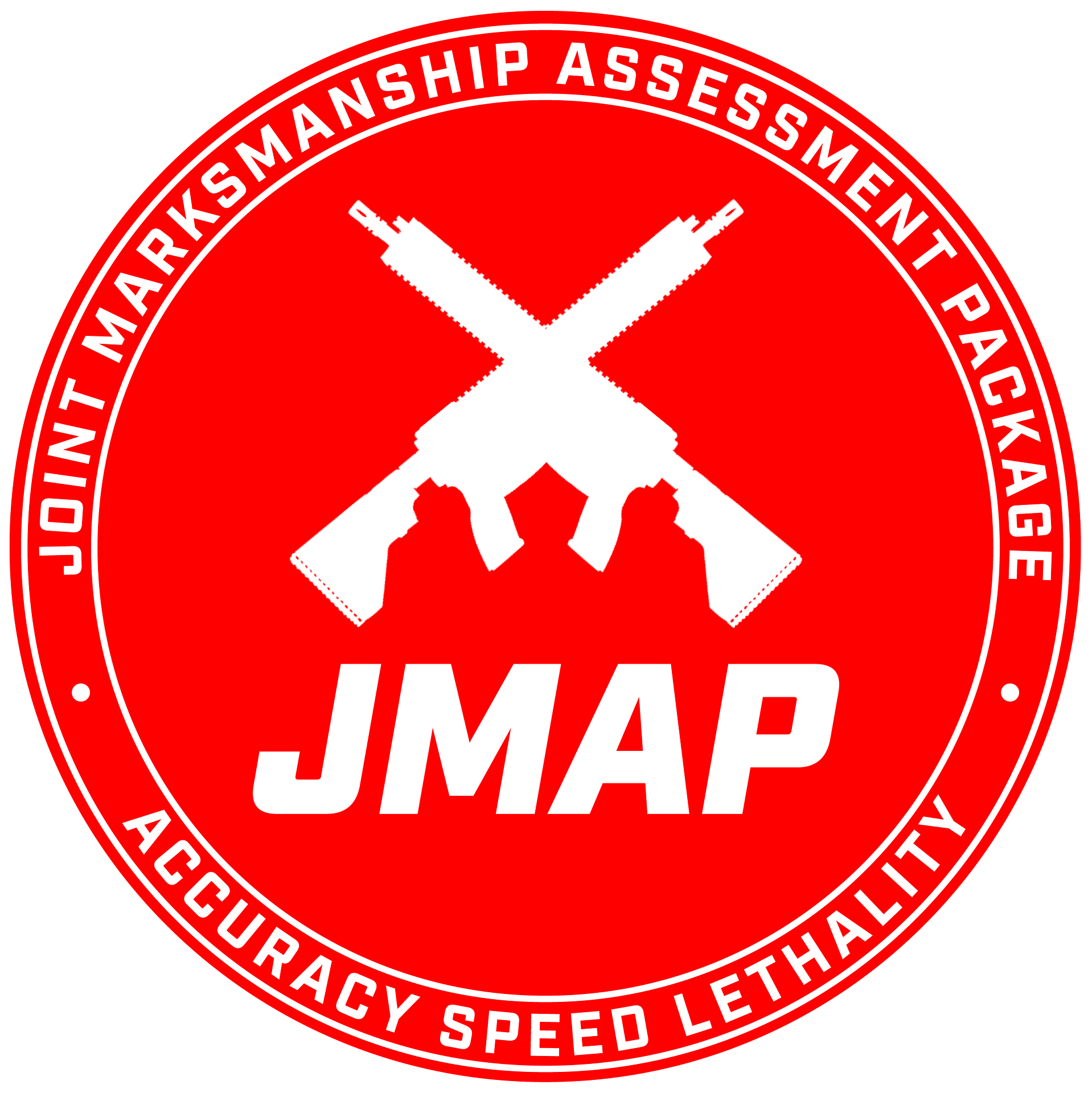Timing All Shots Yields Qualifications With More Information And Training Benefit with little extra effort
Abstract:
Scoring only hits at the end of a qualification gives you just one piece of data – hits for the total qualification. Instead, measure the time of each shot during a drill/qualification and get unprecedented and useful marksmanship data at no extra effort if using JMAP’s Bluetooth Timer or Apple Watch timer to record all shot times.
Using the FBI qualification as an example – the same qual gives 50x more data when timing each shot.
By timing each shot you can also have multiple standards in each qualification. For instance, one time standard for all shooters, and different, harder standards for those holding or seeking special jobs like SWAT, ESU, or other higher-risk positions.
Details:
A typical section of the FBI Qualification has a yardage and par-time. Here is the 7 yard line portion:
And here is what you see at the end of a qual… NO IDEA what happened at 7 yards.

At the conclusion of the entire test, all you know about the 7-yard line portion is… well, not much. Unless they had all 50 hits at the end of the qual, you don’t know if the miss came here. And you don’t know if they met the par-times on this stage. You don’t know, really, anything about what they need to work on.
What if you timed every shot in the same qualification? And made no other change (still scored at the end).
For the same amount of rounds and time, you would now know:
– 3 first shot times
– shot intervals (splits) for 14 shots
– how fast they conduct a emergency (slide-lock) reload
– if they met each par-time
– if they saved rounds
– if they crept or started early
You just went from no data to 21 pieces of data that you can use for detailed training feedback, shooter assessment, and evaluating training and equipment selection. You now know things – a LOT of things. And that was just from 7 yards.
Timing shots on all stages of the FBI qual gives you 47 pieces of useful marksmanship data broken down into specific yard lines and behaviors. Compare that to what you get now…. 2 pieces of data: hits, and possibly some idea of the clustering of those hits.
Do I have your attention? How can you do this voodoo?
By using shot-by-shot timing via Bluetooth Acoustic shot timers or Apple Watch timers connected to JMAP’s electronic scoring.


Using either timer, JMAP’s times each shot of a stage and also informs you of overtime shots. And the Apple Watch timer will even let you know if shooters jumped early.
The AMG timer shown above uses shot sounds to time shots. It is useful when scoring smaller numbers of people where you can spread out and keep the shot noises separated. It costs about $160 bucks. JMAP automatically finds and uses it.
The Apple Watch shot timer uses neural networks running on the watch and monitoring the accelerometer of the watch to “feel” shots. It doesn’t use noise, so you can stack shooters 50+ on a line and get a lot of people done quickly. They will also detect and warn about motion before the start signal, sometimes called “jumping the gun” or “creeping”.
With both systems, times are collected for each shot and are paired with the pertinent shots in the qualifications course of fire.
In the case of the 7-yard line of the FBI qual:
– 7-yard draw x 3
– 7-yard splits x 14
– 7-yard slide-lock reload x 1
For extra detail, go ahead and score at the 7-yard line. You will then know both the speed and accuracy data.
Or score at the end as normal. You lose scoring data per yard line, but it is faster, and most misses happen out at the 15 and 25 yard lines anyway.
Here is the resulting scorecard for an FBI qual that is timed….
<insert pic of scorecard>
Same time. Same rounds. A LOT MORE USEFUL INFORMATION
More Data sure… How about MORE Quals in the SAME QUAL?
50 people on the line… but not everybody has the same job or standards. Sure, all are testing for firearms competence as a sworn officer – the bare minimum. But what about special jobs like SWAT, K-9, Firearms Instructor, or even just a way to break ties?
Using JMAP they can all shoot the same qual at the same time but have different standards for time and accuracy (if desired). SWAT shooters can have their standard. FI’s theirs. All from the same qual, same yard lines, same time.
More Standards, More Data, More Better…
Par-time qualifications serve the need to measure shooters in bulk. They set a performance floor with no incentive to improve above that floor. They also provide minimal feedback on training needs – as a group or individually.
With JMAP and shot-by-shot timing you can set the floor minimum but also tie performance to jobs, or add a little competition to drive improvement all while collecting detailed performance data you can feed back into training, standards setting, and equipment/training testing.
Want to try this on your next qual?
Email jay@scoringtech.com and we will coordinate an on-site demo of JMAP with shot-by-shot timing on your qual. Free!


Comments are closed